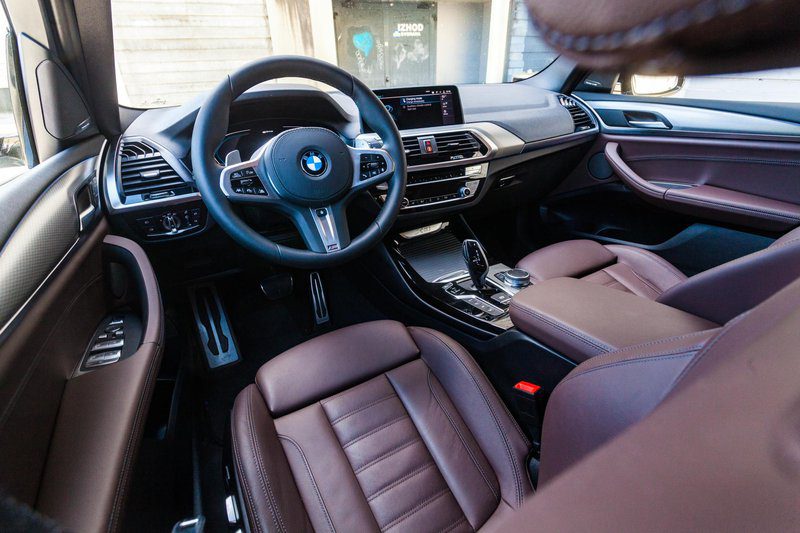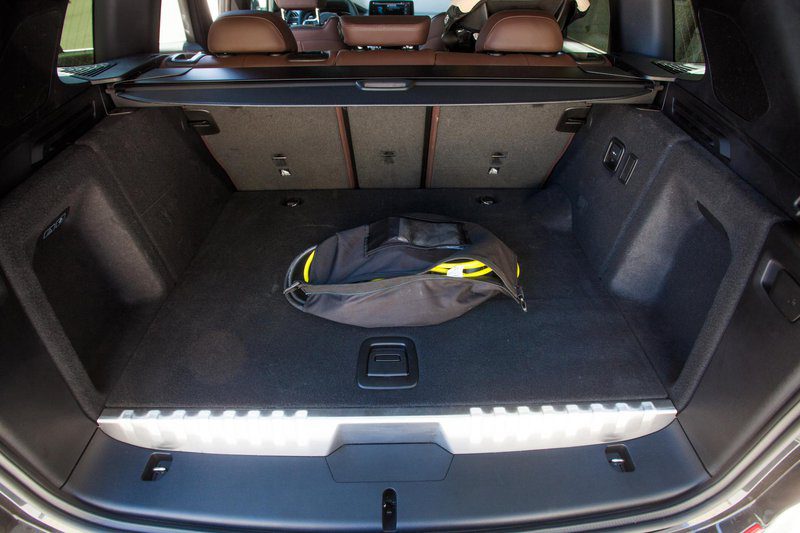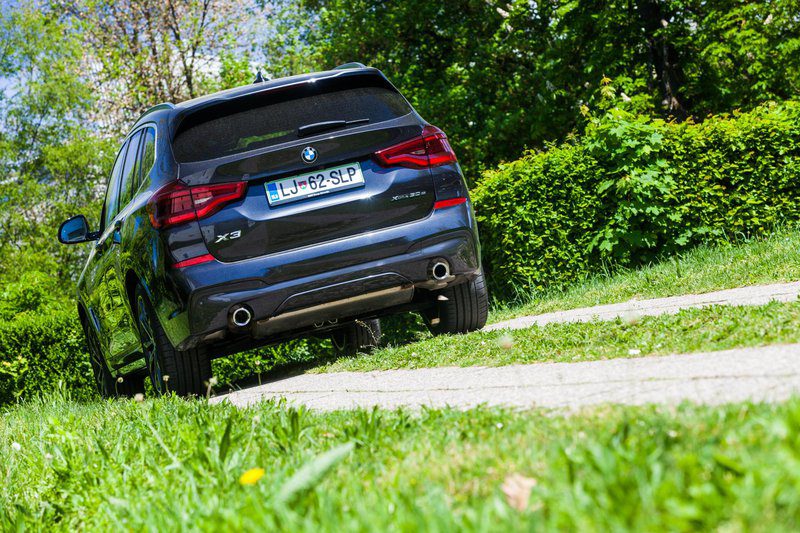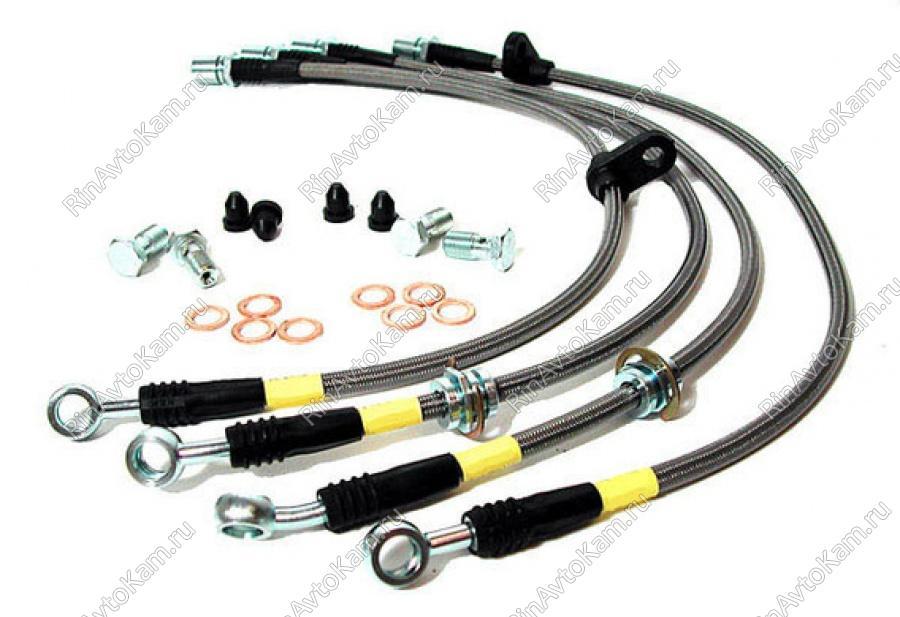
Quick test: BMW X3 xDrive30e (2020) // Petrol and electricity – the perfect combination
The Bavarians continue to electrify their cars. The X3, which drives the popular crossover class, is now available as a plug-in hybrid and will soon be available as an all-electric vehicle. But regarding the latter, at least for now, I'm not alone, because at this point I'm still leaning towards pluggable hybrids. With them, we can already experience fully electric driving and at the same time return to normal when we need it.
The X3 is a perfect example of how this kind of technology can be used on larger premium crossovers as well. Basically, the car is the same as the 30i, except the boot is 100 liters less. (occupied by the battery), and an 184 kW (80 "horsepower") (109 "horsepower") electric motor is added to the petrol unit, resulting in a system output of 292 "horsepower".

With fully charged batteries, the driver can choose to drive only on electricity with a maximum speed of 135 km / h or combined driving. (maximum speed on electricity is only 110 km / h), or selects the battery charging mode and saves electricity for later. So there are many combinations, but below the line, only one is important - the average fuel consumption!
But the best example of determining fuel consumption is, of course, driving, and not calculating and experimenting with driving programs. That's why we did this usual lap twice - the first time with a fully charged battery, and the second time with a completely empty one. It would be a mistake to think that we subtract battery range from hundreds of kilometers and calculate the average consumption of a gasoline engine. Because in practice, of course, this is not the case, and above all, it is much better for the electrical part!
If we just started and drove 100 kilometers at a suitable speed without a single brake, he would even drink water, so on a 100-kilometer circle he accelerates differently, brakes differently and, of course, also goes uphill or downhill. This means that in some parts of the route the battery is discharged more, while in others, especially when braking, it is charged. So the theoretical calculation just doesn't work.

We started calculating the first average gas mileage according to the standard scheme with a fully charged battery, which showed a mileage of 33 kilometers. During driving, the battery's range was increased to a good 43 kilometers by braking and restoring, after which the petrol engine was started for the first time. But, of course, this did not mean the end of the electrical range! Thanks to recuperation, the total electric range increased to an enviable 54,4 km. out of 3,3 transported. The average gasoline consumption turned out to be modest - 100 l / XNUMX km!
We started the second normal tour with a completely discharged battery. This means that we started the gasoline engine at the very beginning of the trip. Again, it would be pointless to think that when the battery is low, the gasoline engine makes sense to run all the time. Because of course not! Due to the recuperation, 29,8 km of driving was accumulated only on electricity.
Although the battery range on the screen has changed almost nothing and stayed above zero for the entire 100 kilometers, some energy still builds up during driving and braking, which is then used by the hybrid node to start, especially during moderate driving or light braking. the system goes into electrical mode as soon as possible. At one time, fuel consumption was higher, that is, 6,6 l / 100 km, but, for example, an X3 with a gasoline engine would consume at least a liter or two more.

The 12 kilowatt-hour batteries in the X3 30e charge from a regular 220-volt outlet in less than six hours, and from a charger in just over three hours.
All in all, this speaks so strongly in favor of a plug-in hybrid. At the same time, he does not support the thesis put forward (unfortunately, also in bureaucratic circles in Slovenia, read Eco Fund), which would like to convince that plug-in hybrid cars are even more wasteful than usual, if you do not take a fee. plug-in hybrid.
And if we return to those who have already got into the current gasoline history, no.If such a plug-in hybrid X3 were used for commuting and only covered 30-40 kilometers a day, they would always run exclusively on electricity. If it can be charged while running, the specified distance can only be traveled in one direction because the battery will be charged for the return. The 12 kilowatt-hour batteries in the X3 30e charge from a regular 220-volt outlet in less than six hours, and from a charger in just over three hours.

Obviously, such a plug-in hybrid, when viewed below the line, is very welcome. Of course, its price tag is a little less welcome. But again, depending on the wishes and needs of the driver. Anyway, such a hybrid kit provides a very comfortable and, above all, quiet ride. Anyone who appreciates this also knows why they are paying more for the difference between a plug-in hybrid and a pure gasoline powered car.
BMW X3 xDrive30e (2020)
Basic data
| Sales: | BMW GROUP Slovenia |
|---|---|
| Test model cost: | 88.390 € |
| Base model price with discounts: | 62.200 € |
| Test model price discount: | 88.390 € |
| Power: | 215kW (292 KM) |
| Acceleration (0-100 km / h): | 6,1 with |
| Maximum speed: | 210 km / h |
| Mixed flow ECE: | 2,4l / 100km |
Costs (per year)
Technical information
| engine: | 4-cylinder - in-line - turbocharged petrol - displacement 1.998 cm3 - maximum system power 215 kW (292 hp); maximum torque 420 Nm - petrol engine: maximum power 135 kW / 184 hp at 5.000–6.500 rpm; maximum torque 300 at 1.350-4.000 rpm – electric motor: maximum power 80 kW / 109 hp maximum torque 265 Nm. |
|---|---|
| Battery: | 12,0 kWh - charging time at 3,7 kW 2,6 hours |
| Energy transfer: | the engine drives all four wheels - an 8-speed automatic transmission. |
| Capacity: | top speed 210 km/h - acceleration from 0 to 100 km/h 6,1 s - average combined fuel consumption (NEDC) 2,4 l / 100 km, emissions 54 g / km - electricity consumption 17,2 kWh. |
| Mass: | empty vehicle 1.990 kg - permissible gross weight 2.620 kg. |
| External dimensions: | length 4.708 mm - width 1.891 mm - height 1.676 mm - wheelbase 2.864 mm - fuel tank 50 l |
| Box: | 450-1.500 l |
We praise and reproach
engine
quiet and comfortable ride
feeling in the cabin
